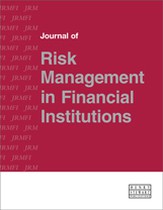Operational resilience: Developing a comprehensive operational risk strategy
Abstract
Financial institutions have become more complex: major functions have been re-engineered and often one crucial process can touch several locations with implications for enterprise resilience. Institutions must adjust oversight practices to maintain a greater understanding of their end-to-end processes and the risk nodes that impact on the service delivery across the process. Risk practitioners have frameworks in place to measure and monitor operational risk, technology risk, cyber risk, outsourcing risk and the firm’s contingency planning. These frameworks are effective in their silos, but do not provide the holistic thinking required to address operational resilience. To service our clients and meet regulatory expectation, this paper suggests an operational resilience practice connecting much more holistically the existing risk practices. The suggested framework seeks to simplify the complex. The authors take a step back and understand the process and the interdependencies; using the concept of layers, the authors propose a scalable methodology that allows risk managers to respond to the ever evolving business requirements. Ultimately the objective is to develop a predictive risk practice that through increased transparency on risk nodes provides the basis for greater analytical capacity to anticipate pressure points on resilience.
The full article is available to subscribers to the journal.
Author's Biography
David Suetens is an Executive Vice President and Chief Executive Officer of State Street’s Luxembourg business after serving as International Chief Risk Officer. Mr Suetens has over 20 years’ industry experience in risk management and speaks widely on risk topics. He holds a faculty of law – juris doctor from the Catholic University Leuven, a degree in investment advice from St Aloysius University (Brussels) and a master’s degree in international banking law and finance from Boston University School of Law.
Richard Flood is a managing director with responsibility for operational risk management across Europe, the Middle East and Africa (EMEA) and business management of the EMEA Enterprise Risk Management (ERM) function. Mr Flood has over 25 years’ industry experience and has held risk responsibility for Internal Capital Adequacy Assessment Process (ICAAP), risk appetite framework and advancing risk frameworks, tools, governance and reporting across the region; he is a member of regional and global risk committees. Mr Flood holds a BA from Williams College and an MBA from Boston University.
Cinzia Dicorato-Rura is an operational risk manager within Global Services UKMEA Enterprise Risk Management responsible for oversight of London Client Service Operations and London Global Operations, South Africa and third party oversight of Transfer Agency. Mrs Dicorato- Rura has over 18 years of experience in operations and risk management and is project lead on the operational resilience framework development at State Street to design, implement and embed the operational resilience methodology across State Street’s UK Critical Economic Functions (CEFs).
Citation
Suetens, David, Flood, Richard and Dicorato-Rura, Cinzia (2017, August 1). Operational resilience: Developing a comprehensive operational risk strategy. In the Journal of Risk Management in Financial Institutions, Volume 10, Issue 3. https://doi.org/10.69554/EWRY5993.Publications LLP
